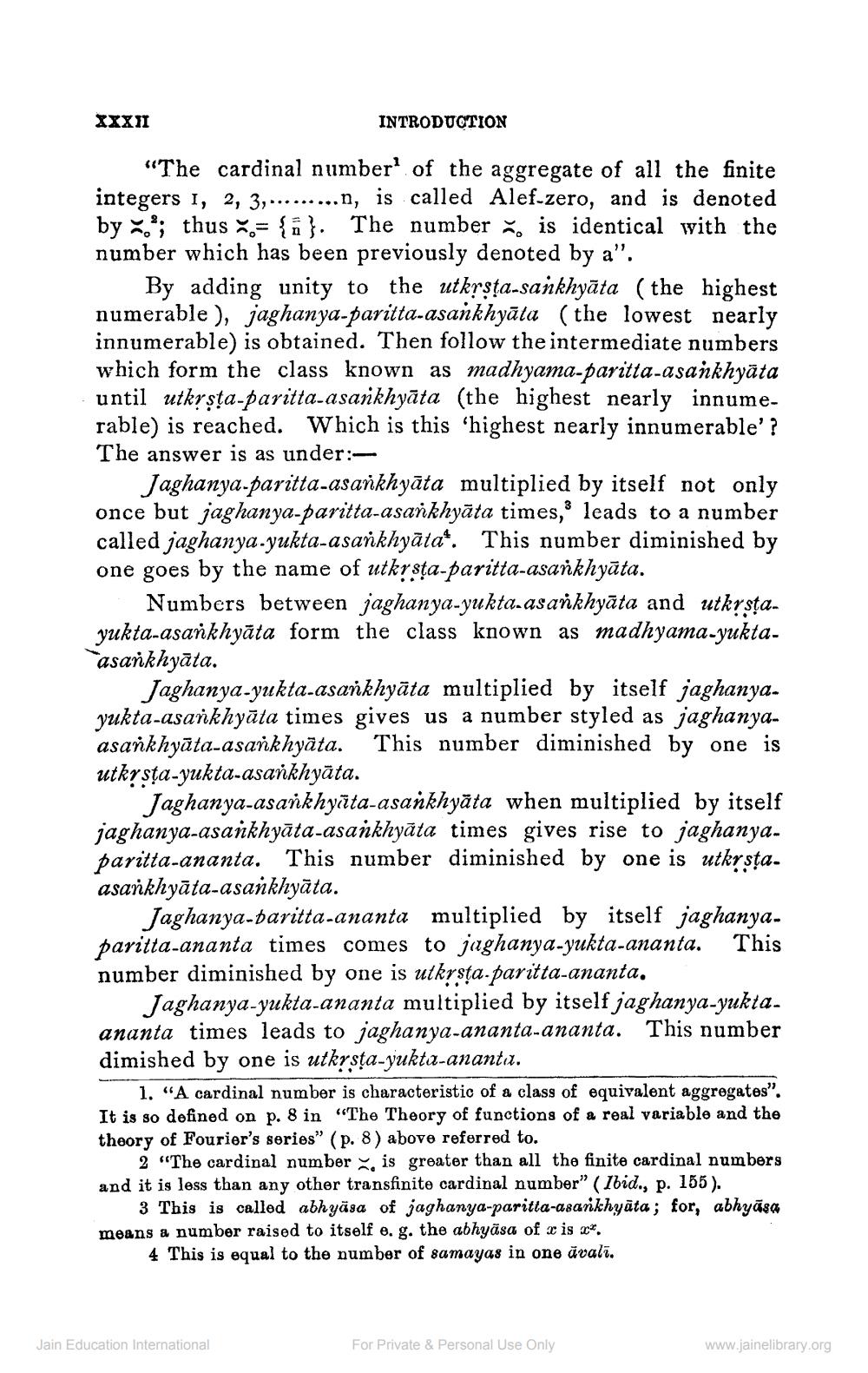________________
XXXII
INTRODUCTION
“The cardinal number of the aggregate of all the finite integers 1, 2, 3, ... ... ...n, is called Alef-zero, and is denoted by *; thus = {i}. The number is identical with the number which has been previously denoted by a".
By adding unity to the utkrsta-sankhyāta (the highest numerable), jaghanya-paritta-asankhyāta (the lowest nearly innumerable) is obtained. Then follow the intermediate numbers which form the class known as madhyama-paritta-asankhyāta until utkrsta-paritta-asankhyāta (the highest nearly innumerable) is reached. Which is this 'highest nearly innumerable'? The answer is as under:
Jaghanya-paritta-asankhyāta multiplied by itself not only once but jaghanya-paritta-asankhyāta times, leads to a number called jaghanya.yukta-asankhyāta*. This number diminished by one goes by the name of utkrsta-paritta-asankhyāta.
Numbers between jaghanya-yukta asankhyāta and utkrstayukta-asankhyāta form the class known as madhyama-yuktaasankhyāta.
Jaghanya-yukta-asankhyāta multiplied by itself jaghanya. yukta-asankhyāta times gives us a number styled as jaghanya. asankhyāta-asankhyāta. This number diminished by one is utkysta-yukta-asankhyāta.
Jaghanya-asankhyīta-asankhyāta when multiplied by itself jaghanya-asankhyāta-asankhyāta times gives rise to jaghanya. paritta-ananta. This number diminished by one is utkrsta. asankhyāta-asankhyāta.
Jaghanya-baritta-ananta multiplied by itself jaghanyaparitta-ananta times comes to jaghanya-yukta-ananta. This number diminished by one is utkysta.paritta-ananta.
Jaghanya-yukta-ananta multiplied by itself jaghanya-yukta. ananta times leads to jaghanya-ananta-ananta. This number dimished by one is utkrsta-yukta-anantu.
1. "A cardinal number is characteristic of a class of equivalent aggregates". It is so defined on p. 8 in “The Theory of functions of a real variable and the theory of Fourier's series" (p. 8) above referred to.
2 "The cardinal number is greater than all the finite cardinal numbers and it is less than any other transfinite cardinal number" (Ibid., p. 155).
3 This is called abhyäsa of jaghanya-paritta-asankhyāta; for, abhyāsa means a number raised to itself e. g. the abhyasa of x is c*.
4 This is equal to the number of samayas in one avalī.
Jain Education International
For Private & Personal Use Only
www.jainelibrary.org




